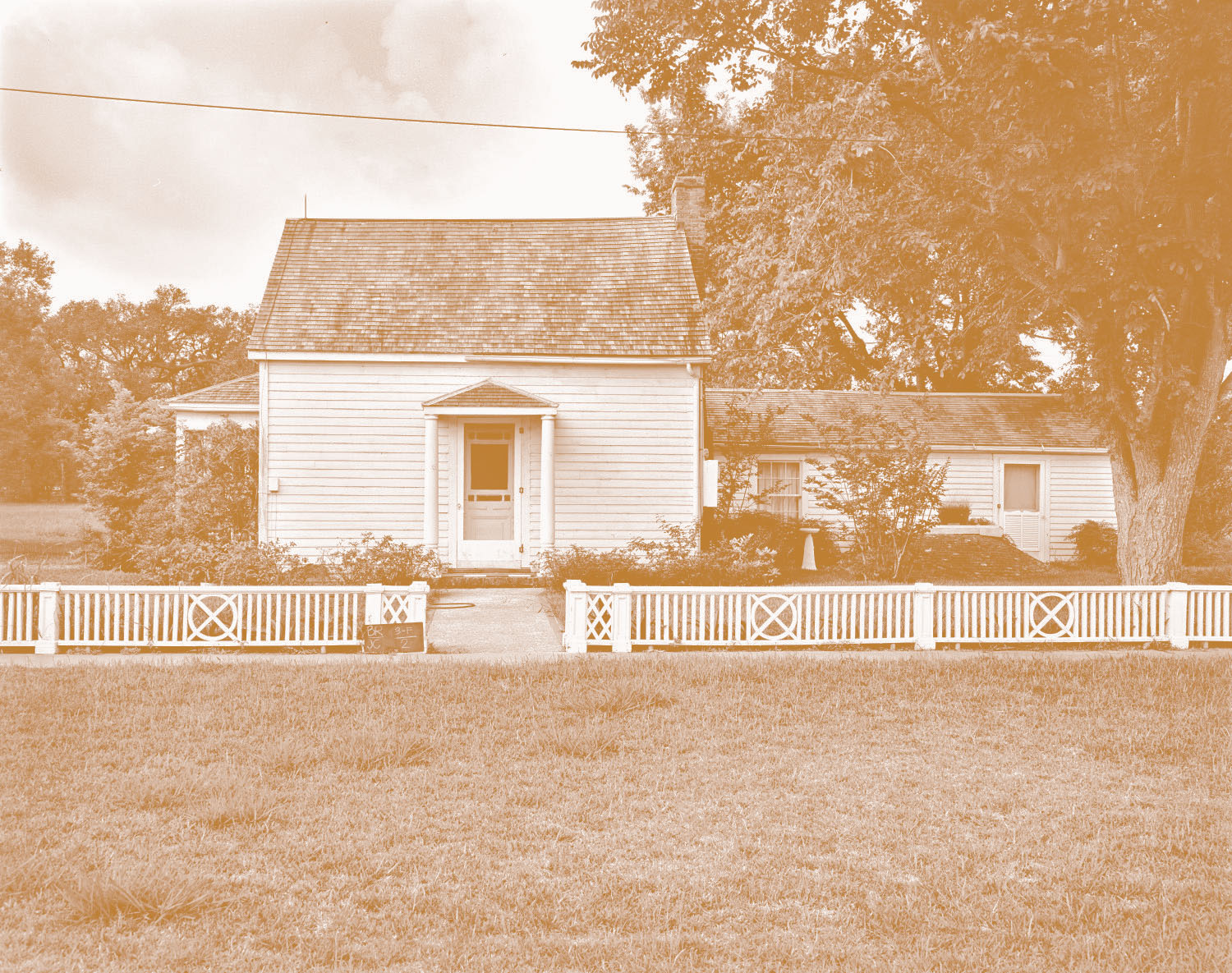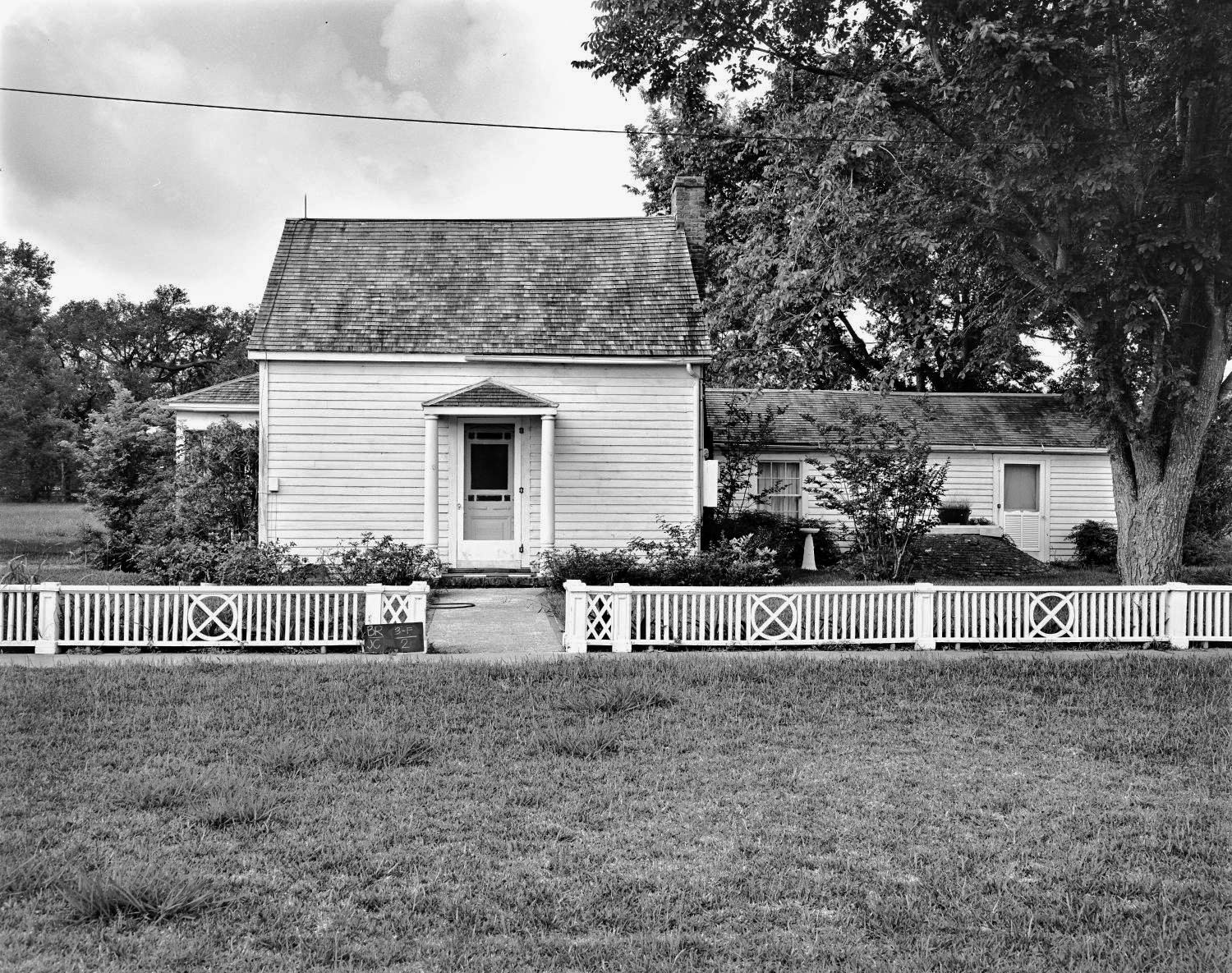Crude Sedimentation
Laleh Kahlili

Peach Point Plantation, Fort North elevation, date unknown. Courtesy of the Texas Historical Commission.
For two sweltering summers in 1989 and 1990, I worked as an engineer at Amoco’s Chocolate Bayou plant in Alvin, Texas, near Galveston. The plant produced olefins and polypropylene, materials needed to manufacture high-performance plastics used in auto parts, fabrics, carpets, and other synthetic consumer products. It had a water filtration pond in the back where an alligator that the workers had named Oscar came and went at leisure. Everything about the plant is entangled in a palimpsest of histories that speak of extractive politics, exploitation, and a recklessness with human futures. Excavating these historical layers tells us something about the complexion and contours of power in each era and how they are built on violence near and far.
The plant’s most recent history concerns its acquisition by British petrochemical company Ineos in 2005. Ineos has the dubious distinction of its CEO recently arguing for the necessity of fracking in the British Isles, despite the British government ending support for fracking in 2019.PA Media, “Ineos Wants to Drill UK Fracking Test Site in Attempt to Show It Is Safe,” The Guardian, April 11, 2022, link.
Immediately prior to the Ineos sale in 2005, there was an explosion in the Chocolate Bayou plant. There were no reported injuries, but “plumes of smoke” and toxic materials were released into the area."Fire at BP Subsidiary Nearly Extinguished in Texas,” Firehouse, August 11, 2005, link. While the flat wetlands surrounding the plant are not densely populated, there are a few local residents who have founded small towns in the interstices of the petrochemical plants in the area. Frequently, alligators and other wildlife wander across the roads and sometimes collide with automobiles driving through. The reports about the explosion said nothing about the resident alligators.
Digging further down, one finds a National Labor Relations Board case filed in 2000 by the union representing workers at the plant.BP Amoco Chemical - Chocolate Bayou and its successor INEOS USA LLC, 16-CA-020258, link. Employees had reported BP Amoco for the unlawful dismissal of some thirty workers when the two companies merged that same year. I remember from my time there how knowledgeable the men in the “back of the plant” were, how wonderfully sardonic, how forgiving of us inexperienced engineers, with our massive self importance. My conservative peers in the “front of the house”—the engineering professionals soon to graduate from Schools of Mines and various Texas chemical engineering departments—meanwhile, whined about the difficulty of “getting anything done” with a union workforce that held its own. The case closed when the company settled with the workers. The terms of the settlement were not divulged.
Digging still deeper, one finds that the plant was first opened in 1978 by Standard Oil of Indiana (soon to be rebranded as Amoco). Graphs tracing the manufacture of plastics show a dramatic spike after 1975. Like so many other hydrocarbon ventures—refineries and transport networks, financial derivatives and options, new models of oil pricing and insurance, and ultra-large crude carriers—the manufacturing of plastic skyrocketed after the nationalization of Middle Eastern oil. In response to what historian Chris Dietrich has called “the most concentrated non-violent transfer of global wealth in human history,” new modalities of accumulation of surplus value emerged in the Global North.Christopher Dietrich, Oil Revolution: Anti-colonial Elites, Sovereign Rights, and the Economic Culture of Decolonization (Cambridge: Cambridge University Press, 2017), 4. The manufacture of plastics was one such new modality, adding value to the crude oil extracted from sovereign nations of the Middle East, with the profits safely ensconced in the global North.
Still further, we discover that, in 1967, Amoco (which was still called Standard Oil of Indiana at the time) acquired the land in Alvin. That same year, because of the June War between Israel and its neighbors and the closure of the Suez Canal, there was a brief reduction in the volume of oil produced. The US excess crude oil capacity had to make up for the Middle Eastern oil lost to the market. It was during this Texas oil bonanza that Amoco acquired the land for the plant.
There are layers and layers still to recover. There is the Texas City disaster of 1947, which occurred just a scant thirty miles away from Chocolate Bayou, and the Great Galveston hurricane of 1900. Both crises redrew the maps of life, work, labor, and community in the region. There is the fact that the area originally belonged to Stephen Austin, the city’s namesake and the so-called “father of Texas.” The acclaim bestowed on the man notwithstanding, he is best known for bringing slaves into Mexican-controlled Tejas, despite the Mexican government’s opposition to slavery, and for his attempts at exterminating the Indigenous Karankawa people.Gerald Horne, The Counter-Revolution of 1836: Texas Slavery & Jim Crow and the Roots of US Fascism (New York: International Publishers, 2022). Enslaved Africans produced cotton on Austin’s Peach Point Plantation (which was later passed on to his sister). There are still public buildings called “Peach Point” thirty miles away from Chocolate Bayou.
The political and legal indulgences that granted the manufacture of plastics in a specific place have an accumulated history and a leaden ideology that grow in a substrate of exploitation and cruelty, absent of care. Chocolate Bayou, the freshwater river that collects pollution from the densely placed petrochemical plants near it and dumps it in a bay near Galveston, lazily meanders through these strata of time and of social relation.
That I, an Iranian woman who arrived by sheer happenstance in Texas in 1985, would end up working on the shores of this river years later, also speaks to other buried histories that are inevitably tangled up with fossil extraction, imperial power, and political cataclysms.
PA Media, “Ineos Wants to Drill UK Fracking Test Site in Attempt to Show It Is Safe,” The Guardian, April 11, 2022, link.
"Fire at BP Subsidiary Nearly Extinguished in Texas,” Firehouse, August 11, 2005, link.
BP Amoco Chemical - Chocolate Bayou and its successor INEOS USA LLC, 16-CA-020258, link.
Christopher Dietrich, Oil Revolution: Anti-colonial Elites, Sovereign Rights, and the Economic Culture of Decolonization (Cambridge: Cambridge University Press, 2017), 4.
Gerald Horne, The Counter-Revolution of 1836: Texas Slavery & Jim Crow and the Roots of US Fascism (New York: International Publishers, 2022).

